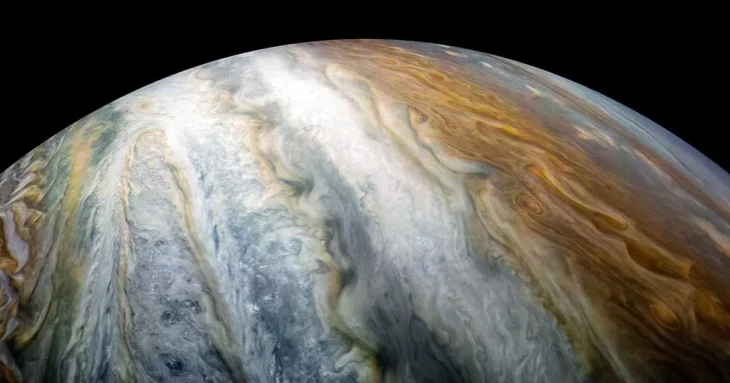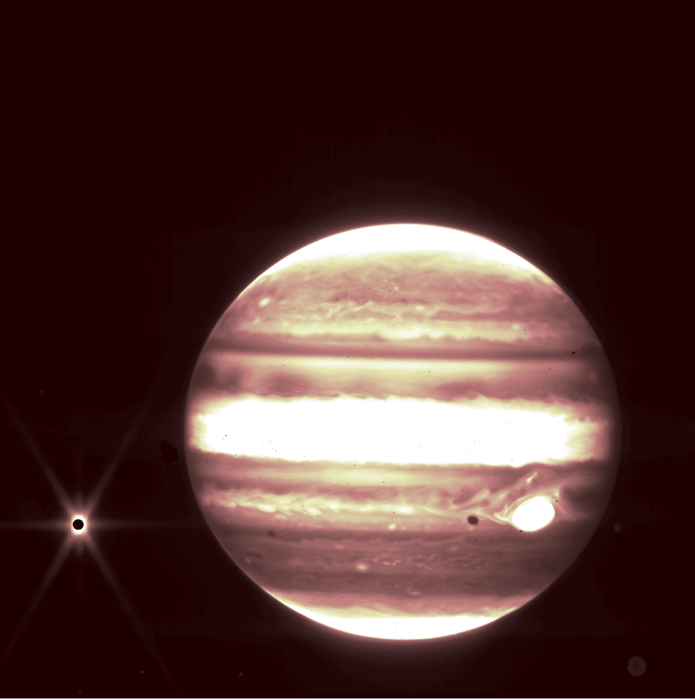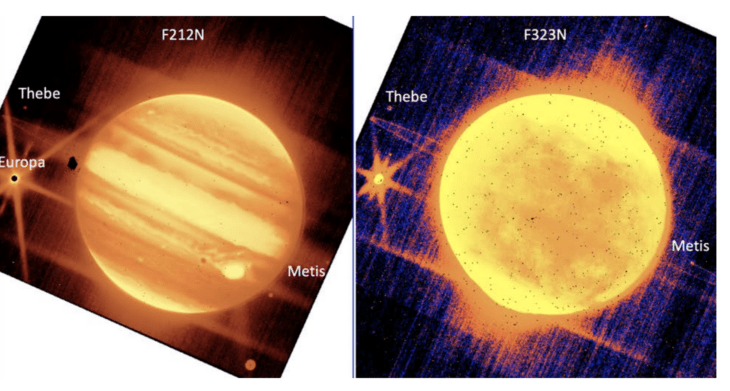On July 12, the National Aeronautics and Space Administration (NASA) revealed a “deeper” view of the universe through impressive images of nebulae and galaxy clusters, captured by the James Space Telescope. Webb (JWST).
The first round of images gave us an extraordinary view of the cosmos, with the deepest and sharpest infrared images of the distant universe to date taken by the most powerful space telescope ever placed in orbit.

To amaze us, once again, NASA published two unpublished images of Jupiter and three of its moons. The visual footage was captured as part of the powerful telescope’s alignment and calibration process, which aimed to see how JWST could capture moving celestial bodies, even with massive, luminous objects behind them.
The JWST proved to be even more effective and powerful than expected, as the Test allowed to determine the use of James Webb to photograph details such as moons and rings around a bright planet like Jupiter, the largest planet in the solar system.

The gas giant was the slowest but also the most spectacular of the nine moving targets on which the telescope check was based. The images of Jupiter allow us to appreciate the spectra of several asteroids and the moons of the monumental planet, which has a radius of 71,492 kilometers, 11.2 times larger than that of Earth.
Observing a luminous planet, its satellites and rings had to be a challenge due to the scattered light that can affect the scientific instrument used, while the sensor has to track guide stars close to the luminous planet.

Because the images of Jupiter were used as guides for JWST engineers, they aren’t as bright as the full-color photos NASA released this week. However, they clearly show Jupiter’s iconic storm, the Great Red Spot, as well as Europa, the planet’s icy moon.
Furthermore, it demonstrates the kind of precision we can expect from James Webb images of the outer Solar System. Scientists believe that both Europa and Saturn’s icy moon Enceladus harbor liquid oceans beneath their crusts, reservoirs that may hold the right materials for life to exist. According to NASA, JWST could observe these moons and any plumes of water ice that rise from beneath their surfaces.
Source: Okchicas
With 6 years of experience, I bring to the table captivating and informative writing in the world news category. My expertise covers a range of industries, including tourism, technology, forex and stocks. From brief social media posts to in-depth articles, I am dedicated to creating compelling content for various platforms.







